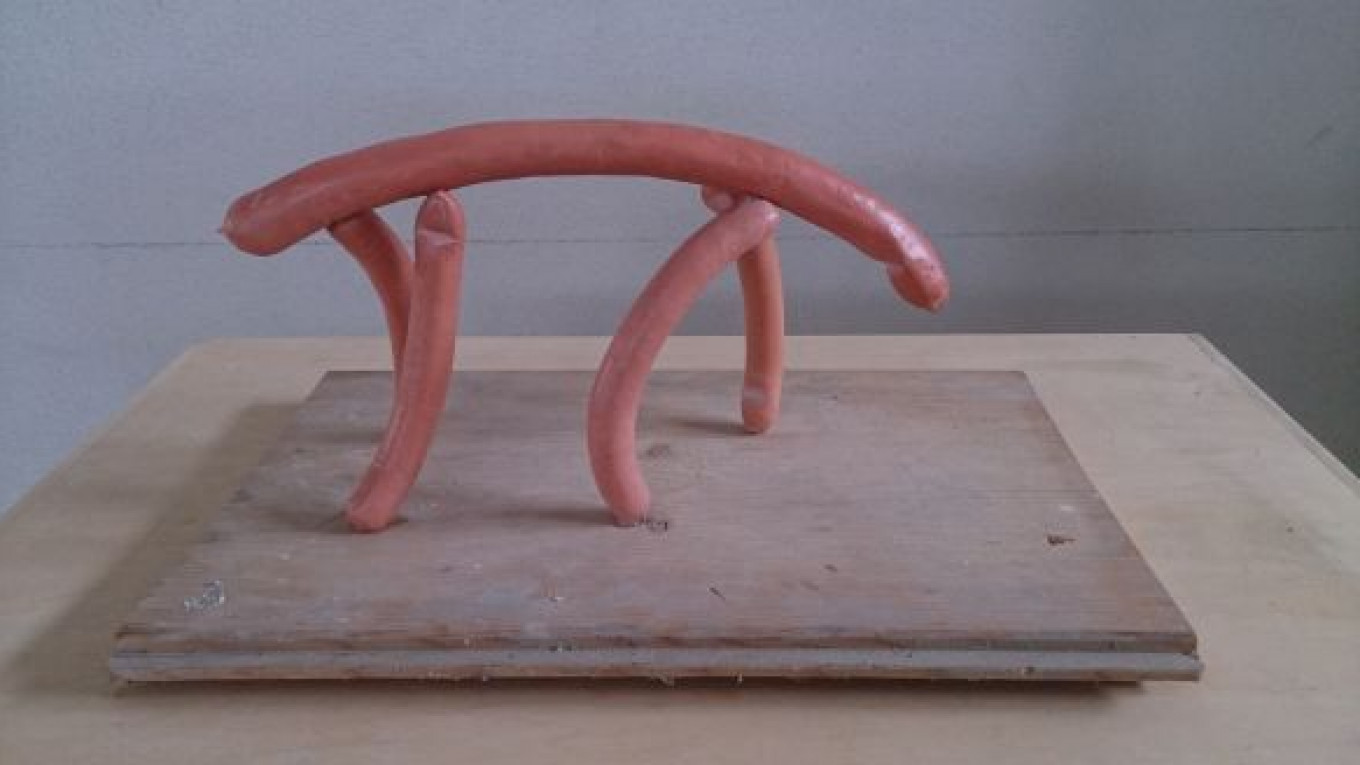After a customary late-summer lull, the Moscow arts scene is slowly heating up as the weather cools down, with each week bringing new gallery openings. On Friday, the Winzavod contemporary arts center opened its new season, with 13 different exhibits opening across all of the galleries in the center.
Winzavod director Yelena Panteleyeva told the Moskovskiye Novosti newspaper that the new exhibits were not united by any common idea or theme: "It would be strange to dictate a theme to the galleries — each of them is a separate institution," she said.
The sheer number of new exhibits on display in different parts of the sprawling center makes for a somewhat overwhelming visit, yet two of the displays were organized by the center itself without support from any of the galleries, and these seem to have gotten the majority of the attention at the opening: In the Large Reservoir exhibition hall, a group of young Russian artists has created a series of installations made around the theme "Heavy Metal," while in the Red Workshop, the Winzavod center has organized a display of work by the well-known Austrian artist Erwin Wurm.
On a gray, rainy day, descending into the basements of Winzavod to examine these new exhibits actually felt somewhat nightmarish, particularly when viewing the works in the Large Reservoir, which is in fact a large, unfinished warehouse-like basement of the kind that one might expect to see in a horror movie. The theme "Heavy Metal" — referring to heavy metal music — seems to have inspired the young artists to create mainly violent and jarring images, like Grigory Kishchenko's paintings of vulgar scenes from everyday Russian life, accompanied to graffitied profanities, or Misha Most's darkened space with video projections of violent images.
Slightly less disturbing were the metal sculptures produced by artists like Ivan Gorshkov, Olga Shapovalova and Vladimir Logutov, though Gorshkov's vaguely corpse-like figures made of twisted scrap metal would by no means have looked out of place in a Dario Argento film.
Winzavod director Yelena Panteleyeva discussed the content of the installations, saying that "they don't so much refer to heavy metal as a musical genre but rather examine this subculture, known for its remarkable aggression and amazing internal energy." Despite the remarkable energy, there were few reasons to linger in the Large Reservoir.
Erwin Wurm's exposition, alternatively titled "Abstract Abtruse" and "Truslivy Traktor" (The Cowardly Tractor), was organized as part of the 5th Moscow Biennale. Like the installations in the Large Reservoir, it was also memorably peculiar, though in a much more light-hearted way.
The majority of Wurm's exhibit is made of small sculptures of resin and plastic, which depict humanoid figures made of what closely resemble sausages and hot dogs. Wurm's hot-dog figures can be seen in a variety of poses –— seated, lounging, standing — and are accompanied by other, less-humanoid sculptures which none the less appear to be made of hot dogs.
In addition to Wurm's hot-dog sculptures, the exposition also includes sculptures made of old furniture which during the exhibit opening contained bottles of liquor, intended to "facilitate appreciation of the artwork." Unfortunately, later viewers of the exhibit will not have this assistance in confronting the Austrian's sausage-men.
While these two exhibits have drawn the most attention, virtually every gallery within Winzavod has new artwork for the new season, and the Regina Gallery, the 11.12 Gallery, and the pop/off/art Gallery all contain projects that are part of the Biennale.
In the Regina Gallery, Ukrainian artist Sergei Zavra is showing his work entitled "Library of Optimism." Zavra, who has also been exhibiting work this year in the main project of the Venice Biennale, is displaying a series of nostalgic sculptures made from old furniture that are intended to showcase the life of an "ordinary" Soviet citizen. Soviet nostalgia is also prominent in Bashkir artist Rinat Voligamsi's exhibit, "Snow," which uses photos from old Soviet newspapers to create semi-fictional narratives about the world around us. Photographer Maria Ovcharenko's exhibit at pop/art/off, "Furious Like a Child," moves away from reminiscences of the last century and tries to examine the world through a child's eyes.
One interesting trend in Winzavod's new season seems to be the inclusion of many works by non-Muscovite and non-Russian artists. Outside of the projects of the Biennale, Marat Guelman has brought a collection of works by Krasnodar artists to his gallery, while the Grinberg gallery has gathered a collection of contemporary Ukrainian photography entitled "Expropriation."
All the exhibits of Winzavod’s new season can be seen at the Winzavod Center for Contemporary Art, 1 4th Syromyatnichesky Pereulok, Bldg. 6.
Contact the author at g.golubock@imedia.ru
A Message from The Moscow Times:
Dear readers,
We are facing unprecedented challenges. Russia's Prosecutor General's Office has designated The Moscow Times as an "undesirable" organization, criminalizing our work and putting our staff at risk of prosecution. This follows our earlier unjust labeling as a "foreign agent."
These actions are direct attempts to silence independent journalism in Russia. The authorities claim our work "discredits the decisions of the Russian leadership." We see things differently: we strive to provide accurate, unbiased reporting on Russia.
We, the journalists of The Moscow Times, refuse to be silenced. But to continue our work, we need your help.
Your support, no matter how small, makes a world of difference. If you can, please support us monthly starting from just $2. It's quick to set up, and every contribution makes a significant impact.
By supporting The Moscow Times, you're defending open, independent journalism in the face of repression. Thank you for standing with us.
Remind me later.






